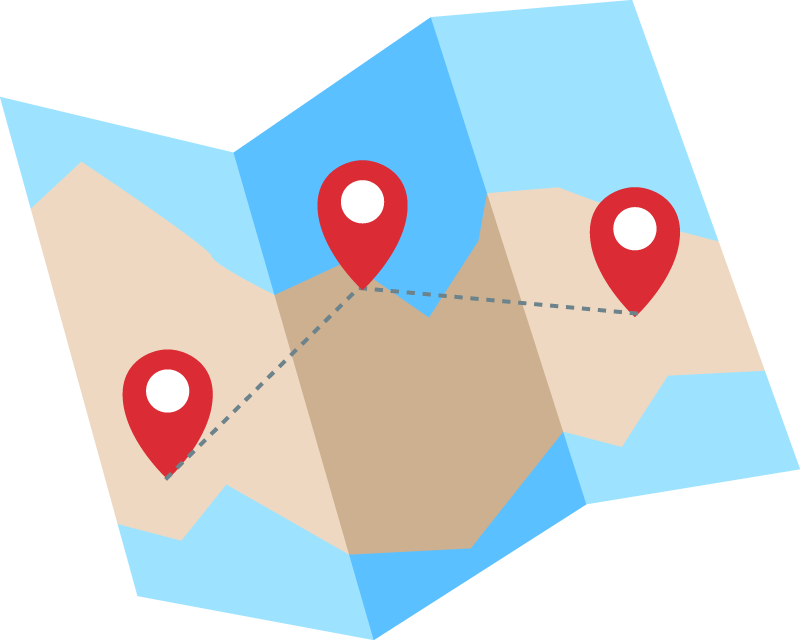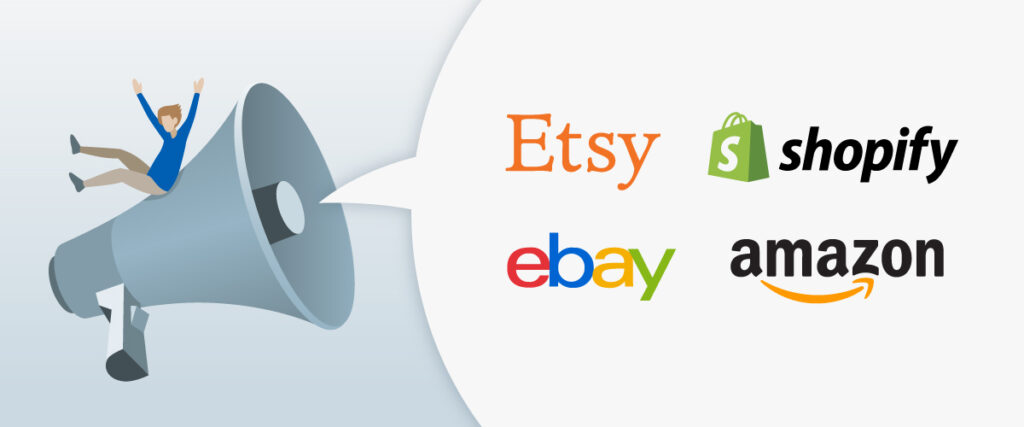Although geomarketing has been around for decades, mastering it is a lifelong endeavor. This practice evolves as mainstream technologies mature and new ones emerge, so it’s prone to misuse and can backfire when misapplied. To successfully incorporate it into your e-commerce strategy, learn from the best practices of adaptable vendors and the mistakes of less perceptive merchants.
How Successful Entrepreneurs Maximize Geomarketing
Your imagination is the only limit to geomarketing’s utility. For starters, draw inspiration from proven use cases that many successful e-tailers have capitalized on.
Gathering Competitor Intelligence
This marketing technique helps you discover direct and indirect competitors with physical storefronts in your service areas. Location data can reveal the foot traffic they receive daily, their operating hours, and their busiest and slowest periods.
Analyzing sociodemographic data, such as age, gender, median income, household spending and educational attainment, gives you a deeper understanding of local consumers. Understanding why local consumers gravitate toward your potential competitors and their unmet needs can help you gain new business and nurture loyal shoppers.
Say you sell children’s clothes and toys and target parents working downtown and living in American suburbs. Geospatial data reveals which ones have malls that can take more than 30 minutes to reach. High foot traffic during the evening would suggest that these shopping centers get big crowds only after everybody clocks out for the day.
Offering the same merchandise your target customers can find in local malls — or maybe a wider variety of products — gives them a convenient alternative to buy essentials for their kids. Only 43% of Americans like shopping online more than visiting stores, but saving money on gas and freeing more time for family are compelling reasons to persuade anyone to order online instead of traveling far distances to buy the same things.
Launching Targeted Marketing Campaigns
Location data underpins many tried-and-true methods of reaching hyperspecific consumers. Data brokers provide filters based on third-party data, including designated market areas, zip codes, states, counties and municipalities, to help you build audiences for social media advertising campaigns.
Data brokers can help you tap the marketing prowess of direct mail. Saturation mailings allow your e-commerce shop to stand out, especially since cutting through the noise can be challenging and expensive digitally.
Sending marketing collateral to residents in a predetermined area can introduce and reinforce your brand’s visual identity, which is crucial to achieving long-term success. Colour can boost brand recognition by up to 80%, rendering your business more distinguishable from the competition when your target customers see your logo online.

Third-party data providers prepare consumer lists based on demographic information compiled using geomapping tools. These compilations include people’s names, home addresses and email addresses, enabling you to increase your marketing impact with personalized content. Going old school is particularly helpful when marketing to older demographics and teaching them how to order your products online.
Leveraging Omnichannel Retail
Consulting firm Grand View Research expects the global geomarketing market to grow from US$21.90 billion in 2024 to US$76.23 billion in 2030. Omnichannel retail is one of the industry’s primary growth drivers, reflecting the reality that more consumers expect a seamless offline/online shopping experience.
If you own a brick-and-mortar store that accepts online orders, combining geographic information and the first-party data your digital storefront logs is critical to keeping customers satisfied. Geofencing, beacon technology and other location-aware technologies help you develop a holistic view of your customers, personalize your messaging, offer spot-on location-based services and maintain enough in-store and warehouse inventory levels.
For instance, geomarketing enables you to remind in-store customers about the items they added to their carts online months ago but didn’t buy. Sending location-triggered push notifications to their Bluetooth-enabled smartphones with personalized messaging and mentioning that the products are in stock can complete a long-overdue sale.
Considering that online shoppers abandon their carts 70.22% of the time, according to Baymard Institute, a well-thought-out omnichannel retail strategy can help you maximize your sales. It can also reveal why shoppers don’t complete transactions and point out which pain points to address.
Reducing Logistics Costs
Incorporating geomarketing into your e-commerce strategy is a worthwhile investment to minimize shipping costs. Geographic data enhances business intelligence. It helps you build an efficient delivery network by analyzing high-density areas, delivery routes, traffic patterns and warehouse and distribution center locations.

For instance, many Canadian entrepreneurs link Chit Chats to Shopify, WooCommerce, BigCommerce and Squarespace storefronts to save on postage and track countless deliveries worldwide.
Chit Chats has many locations where merchants can drop off packages, pick up cargo via Canpar at discount rates and accept shipments through third-party carriers. Such flexibility helps e-tailers solve logistical challenges and ensure shoppers receive orders on schedule at the least possible cost.
Moreover, location data helps you build a resilient supply chain. Identifying the nearest reliable suppliers gives you enough options when sourcing raw materials and buying finished products wholesale to satisfy demand, negotiate for favorable prices and mitigate the effects of any disruption. The pandemic, climate change-intensified natural disasters like wildfires, wars and tariffs have rendered Canadian supply chains highly vulnerable in recent years, so rethinking and diversifying suppliers is more important than ever.
Common Ways Business Owners Misuse Geomarketing
Geomarketing is a tool, not a silver bullet for your location-related business problems. It’s hardly effective at best and detrimental at worst when misused. The most common reasons it fails to deliver desired results include:
- Starting without a plan: Clear intent helps you determine the most suitable data for your goals.
- Overrelying on geography: Combining location data with other relevant information is necessary to truly understand what makes your target customers tick.
- Using insufficient location data: Specificity matters, so imprecise location data like IP addresses can waste advertising dollars.
- Working with unscrupulous data brokers: Partnering with reputable third-party data providers is essential to use geomarketing ethically.
Maximize Geomarketing to Elevate Your E-Commerce Strategy With Chit Chats
Chit Chats firmly believes that geomarketing is integral to every successful e-commerce business strategy. Get in touch today to optimize logistics and use precious location data to build an efficient, affordable delivery network.
Author Bio
Known for his expertise in industry dynamics, Jack Shaw serves as the editor of Modded. Through his insightful analysis and practical advice, Jack seeks to empower readers with the knowledge to thrive in the ever-evolving corporate landscape, guiding them toward success in their professional endeavors.
